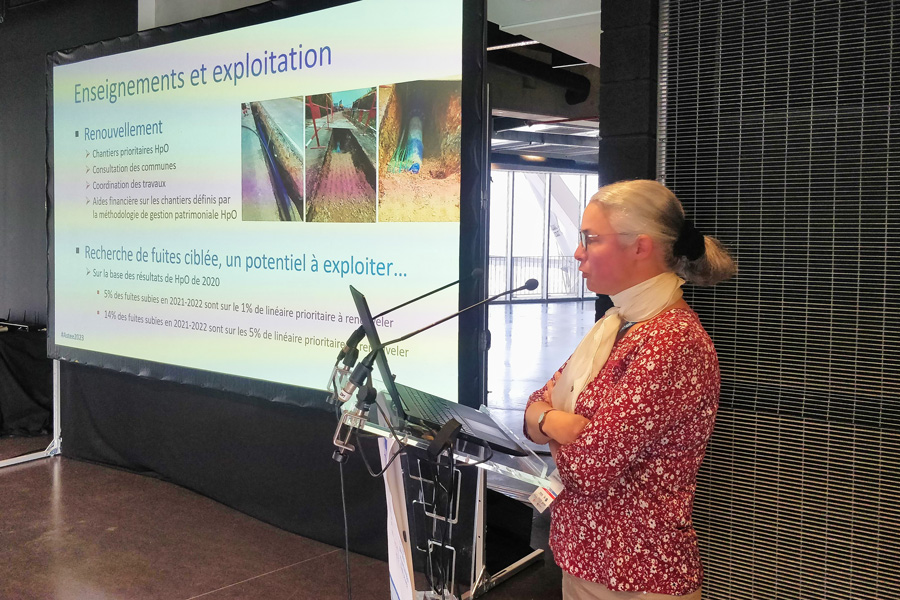
Chartres Métropole Eau (28) – Gestion patrimoniale réseaux eau potable
Assistance technique pour la gestion patrimoniale des réseaux d’eau potable avec mise en œuvre de SIROCO® puis HpO®
The challenge for the coming decades
Ageing water networks coupled with climate change, which is making water resources more critical, mean that a forward-looking, rational approach is essential to maintain a resilient water service in the future.
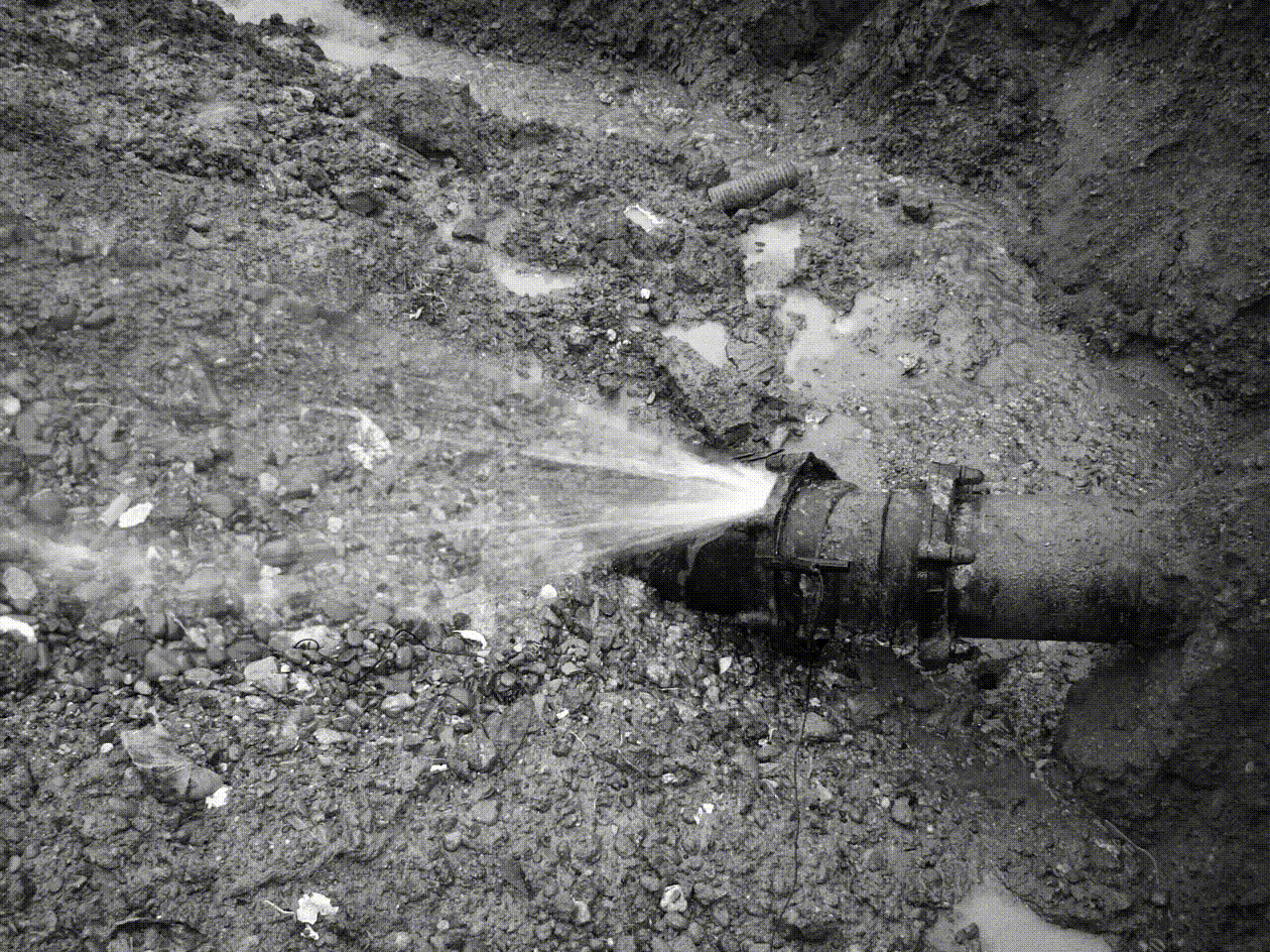
How should replacement be approached? What asset management strategy should you adopt? What are the objectives?
A shared vision between elected officials and technical services
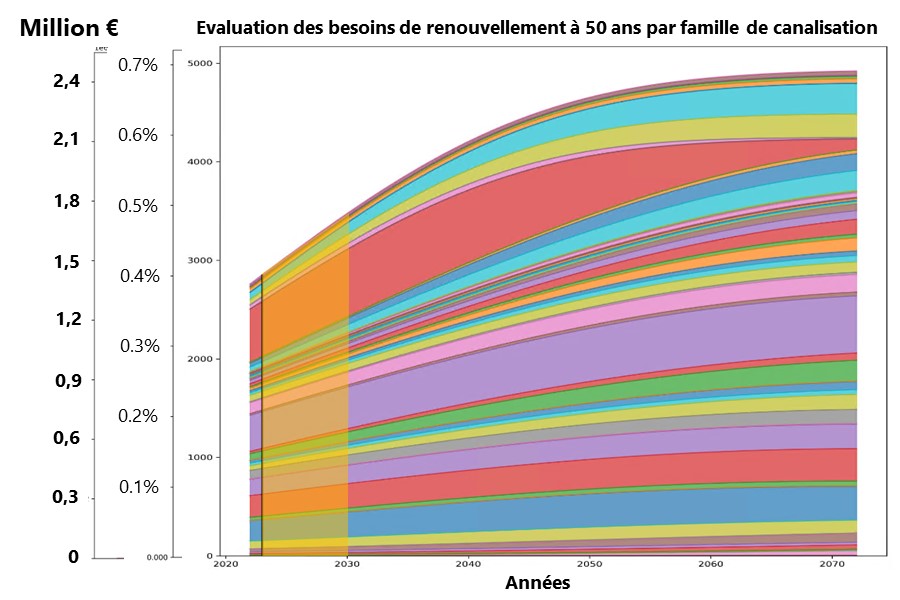
Accompanying your utility towards asset management
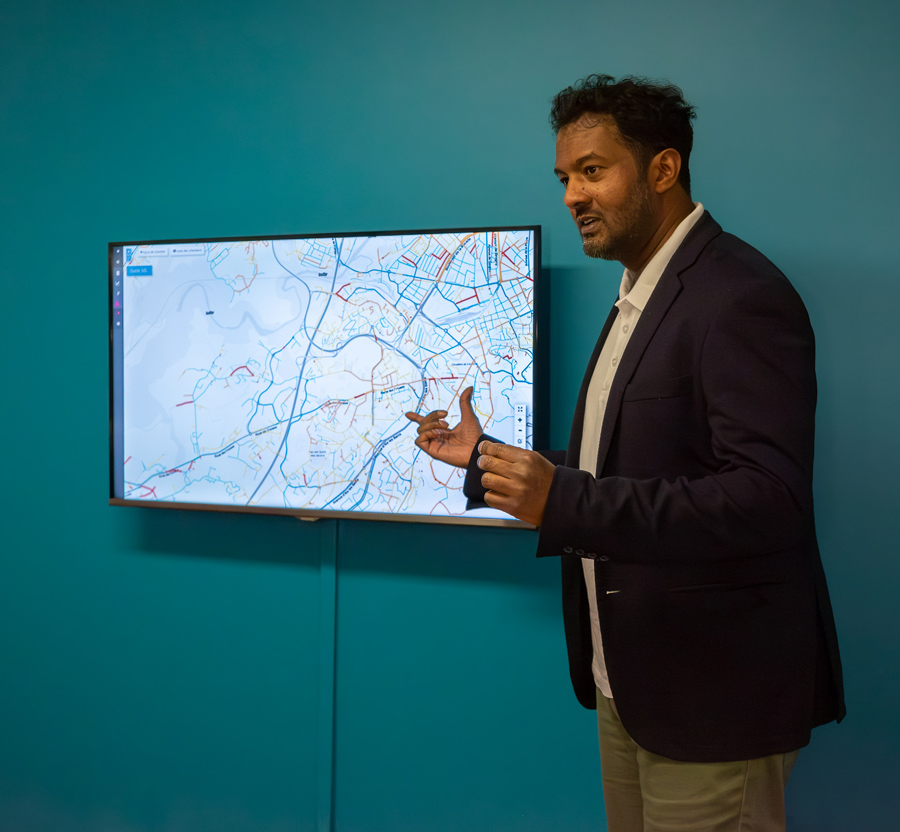
Streamlining decision-making
and planning
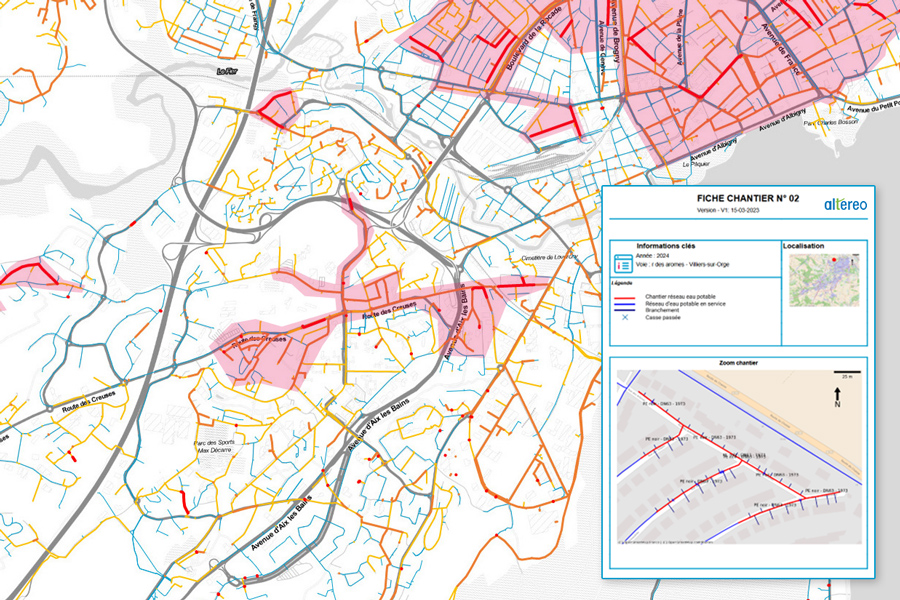
We can be involved right from the definition of objectives and strategy, the structuring of data or the organisation of the service and processes, through to AI-based failure forecasting and multi-objective optimisation of pipe replacement.

Kevin
Advising / tools

Etienne
AI models

Natacha
Economy

Miles
Data Science

Benoît
Advising / methods

Florence
Geomatics

Jean-Baptiste
Engineering
An essential prerequisite: cleaning up and assessing existing data
The initial data required is the GIS layer of pipes, with at least the materials, diameters and laying periods, and the GIS layer of past faults, with at least the dates, cause and type… These data sets are rarely perfect.
The tools in our HpO® digital solution allow us to visualise data on several graphs in order to evaluate them.
Visualising cleaned data through different « lenses » provides valuable information on quality, quantity, anomalies, patterns and forecasting potential before going any further in the process.
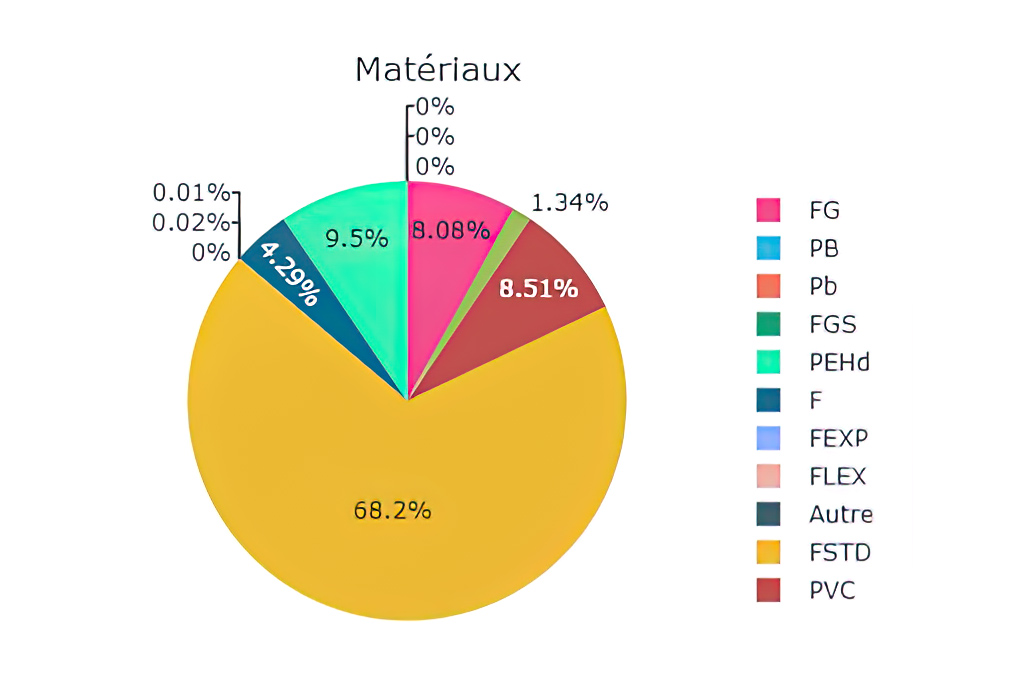
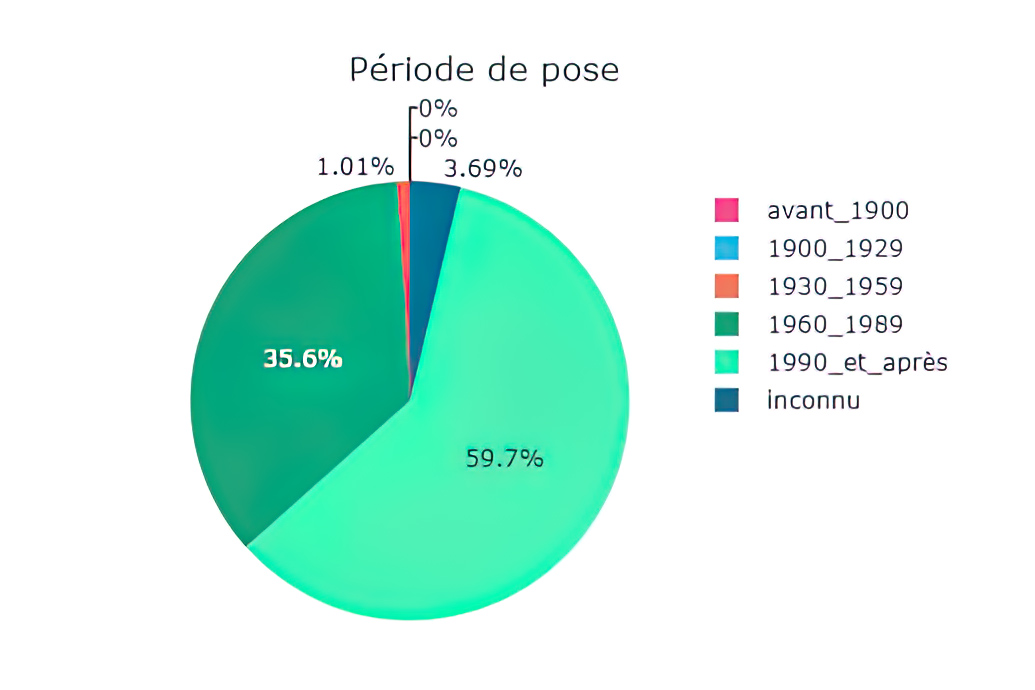
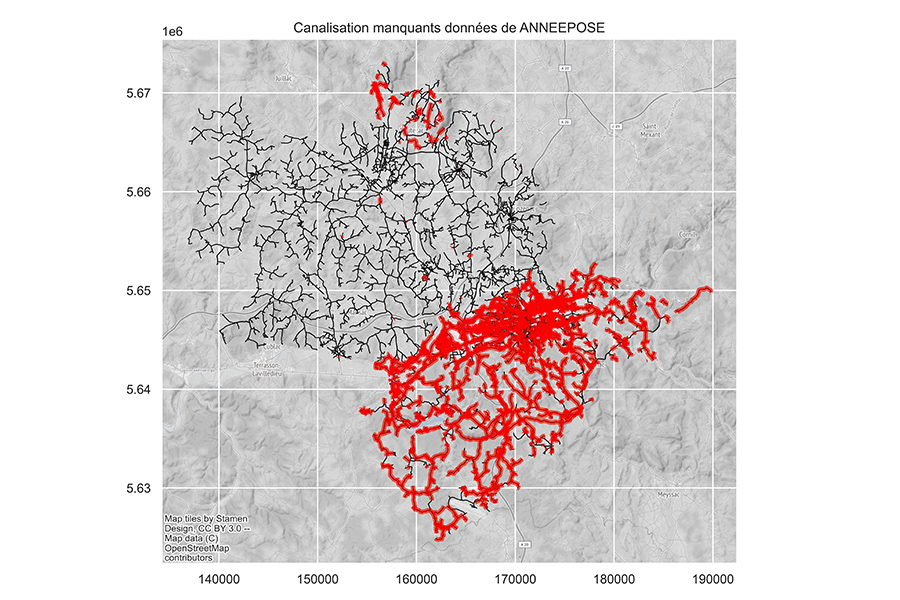


⬇ Deliverable
Assessment of the data and its potential, cleansing and restructuring of the dataset, advice on the right effort to improve the data and the next steps.
Determining the size of the replacement rate and deciding on a political choice and financial resources
This step can be bypassed if an annual replacement rate has already been set.
The optimum replacement rate is determined by a detailed analysis of the composition of the assets in terms of materials, diameters, age and breakages.
The tools in our HpO® digital solution enable us to categorise the assets into homogeneous families and calculate differentiated survival curves for each of these pipe families.
This enables us to identify the pipe families with the greatest potential for failure and to determine the need for renewal over the long term.

⬇ Deliverable
Long-term replacement and financial requirements, families of pipes with a high potential for failure, optimum replacement rate (constant or gradual).
Produce a map of likelihoods of failure and provide an unprecedented decision-making tool
The tools in our HpO® digital solution enable us to exploit a branch of artificial intelligence called machine learning to learn from past failures, the characteristics of pipes and their immediate environment.
Based solely on data from the network under study, our HpO® AI builds a model to explain the failures and verifies it against the recent past.
Projected into the future, the verified model enables us to reliably forecast the likelihood of failure for each pipe. The result of the forecasting calculation is a map of short-term likelihoods or potentials for failure.
At this stage, the water utility has an unprecedented decision-making tool for deciding on urgent works and coordinating with other works (roadworks).
Two paths to suit your needs:
Cleaned start data
Only 4 parameters:
Diameters, materials, ages and breakages
« Express » map of likelihoods of failure
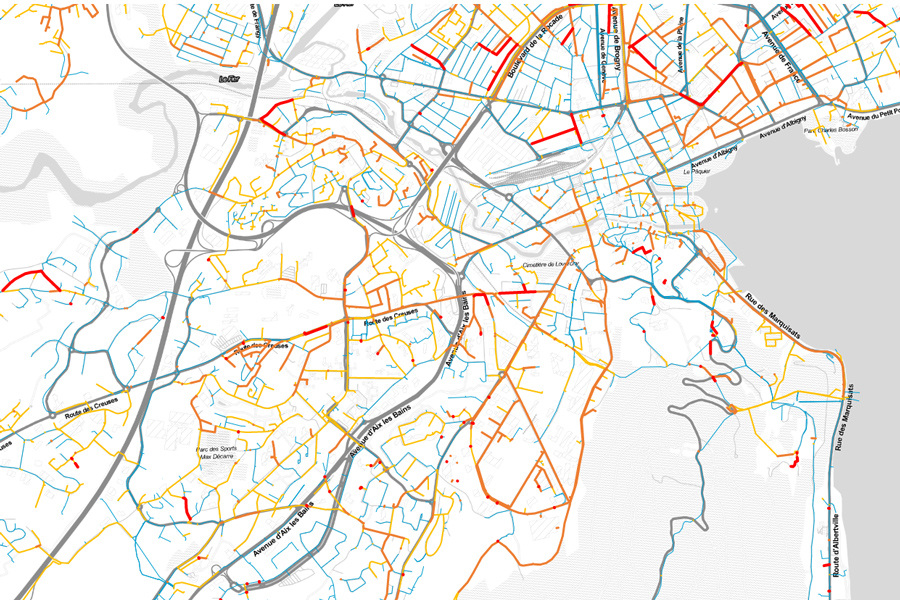
Cleaned and strengthened source data
More parameters:
Internal data + external sources (+ zone to zone if necessary)
« Enriched» map of likelihoods of failure

⬇ Deliverable
Map of likelihoods of failure, GIS layer, spreadsheet list.
Example of data that can be used:
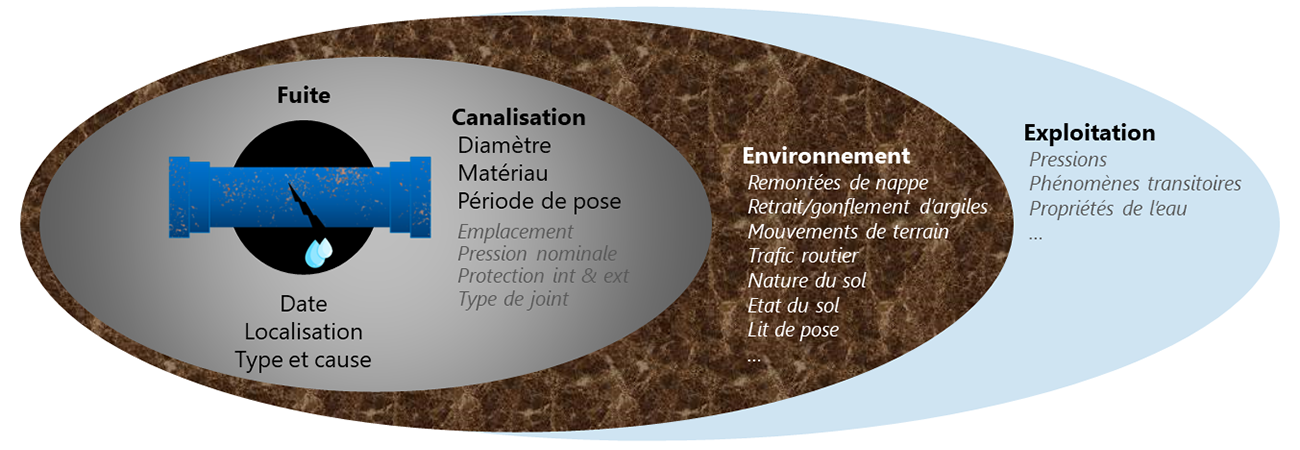
THE FAILURE FORECAST IS VERIFIED AND RELIABLE
Target leak detection and make it more efficient (even without existing District Metered Areas)
The tools in our HpO® digital solution enable us to identify areas with a high potential for leaks and therefore :
The HpO® approach allows us to implement a non-cyclical leak detection strategy without heavy investment in additional leak locators or sectorisation meters.
Exploiting the potential for failure increases the chances of finding buried and invisible leaks in pipes.
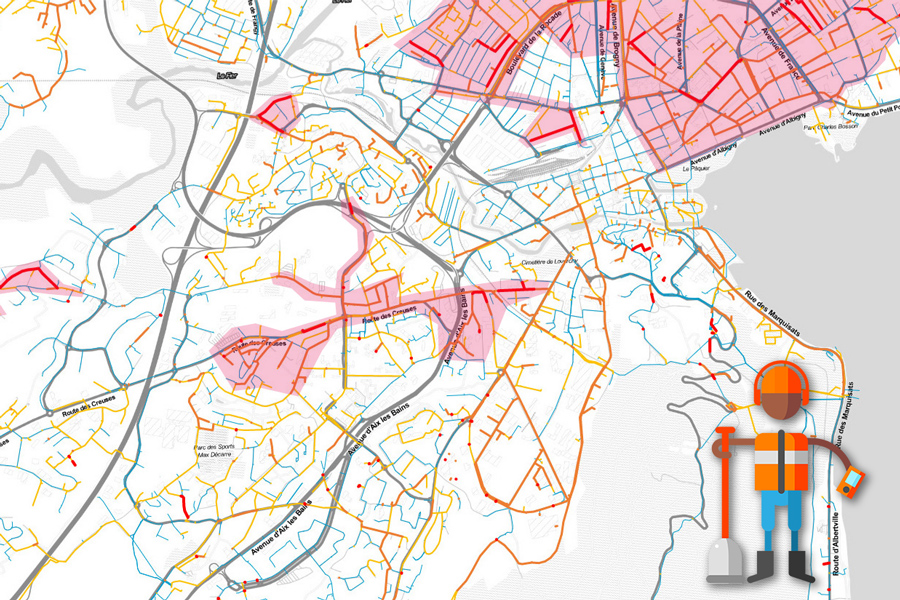
⬇ Deliverables
Areas with high potential for leaks, action plan.
Target sections suitable for physical inspection or morphological laboratory analysis
The tools in our HpO® digital solution enable us to identify areas of high interest for physical inspection or analysis.
This involves targeting pipes for analysis/inspection using the various technologies available today: sampling for the laboratory, in situ scanner, acoustic waves, intelligent balls and various robots.
It should be noted that the HpO® approach, based on failure forecasting with verification of the forecast, presents a prior, autonomous and economical alternative to the implementation of laboratory analyses and physical inspections. We recommend reserving the inspection budget for pipes with a diameter greater than 300 mm.
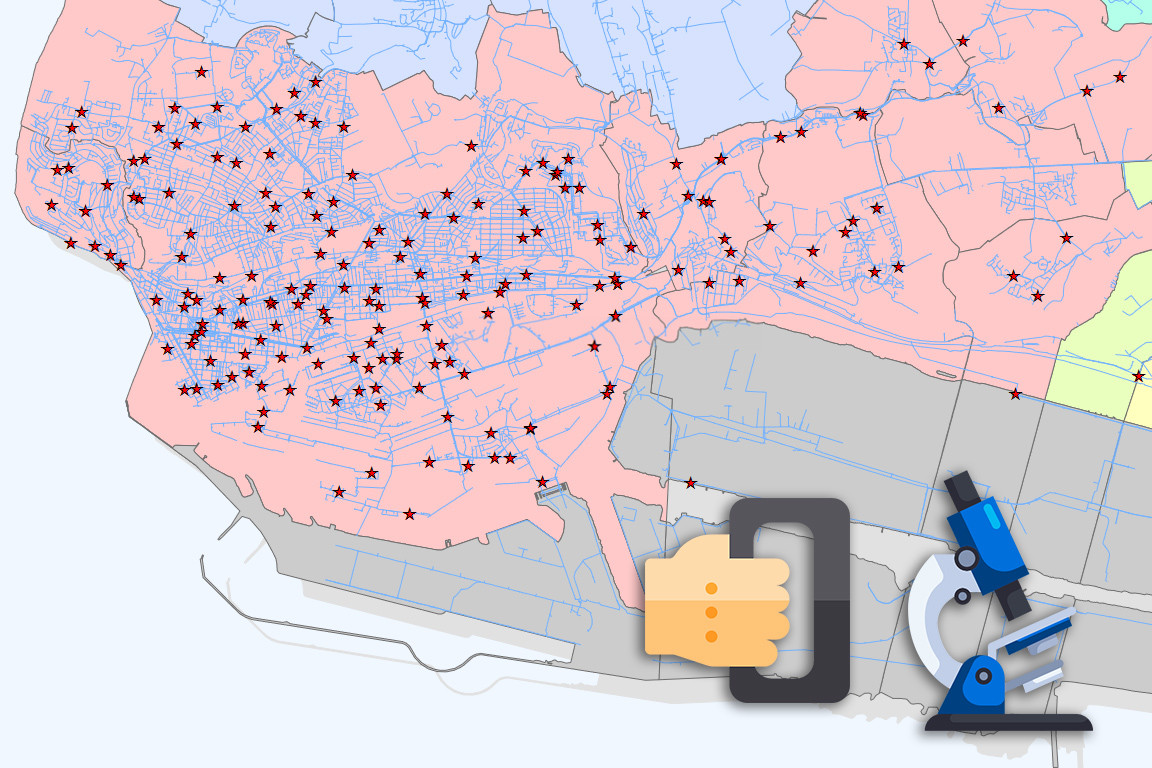
⬇ Deliverables
Sampling plan based on objectives, sampling/inspection plan.
Optimising pipe replacement
In addition to triggering priority works or coordinating works on the basis of the potential for failure, renewal programming can be rationalised and established by taking account of criteria reflecting the consequences of failures.
For example, the impact on the water supply to customers, areas of economic importance or sensitive installations; or losses from a water resource that is more fragile than another. These criteria are specific to the area under study and are defined with the water utility.
The tools in our HpO® digital solution enable us to model all the criteria and prioritise pipes according to the following principle:
Replacement priority = likelihood of failure x consequence of failure
The pipes prioritised in this way are then assigned to 3 priority classes according to the length of the network or budget tiers.
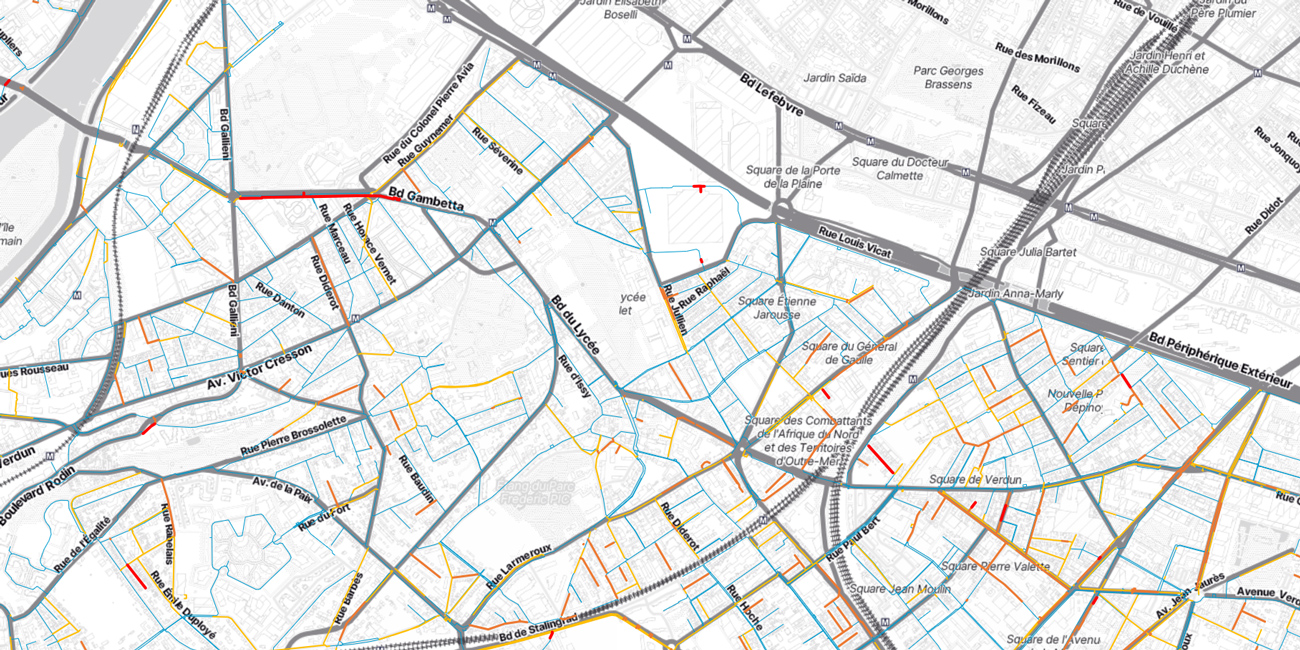
⬇ Deliverables
Summary of criteria and thresholds, map of pipelines by priority class, GIS layer and spreadsheet list with detailed scores.
Define coherent pipe replacement projects
The tools in our HpO® digital solution enable us to aggregate neighbouring pipes to achieve a minimum site size. The starting point is one or more neighbouring pipes that have been prioritised beforehand. A replacement programme is then drawn up, organising the work over the following year or years in line with the chosen replacement rate or annual budget.
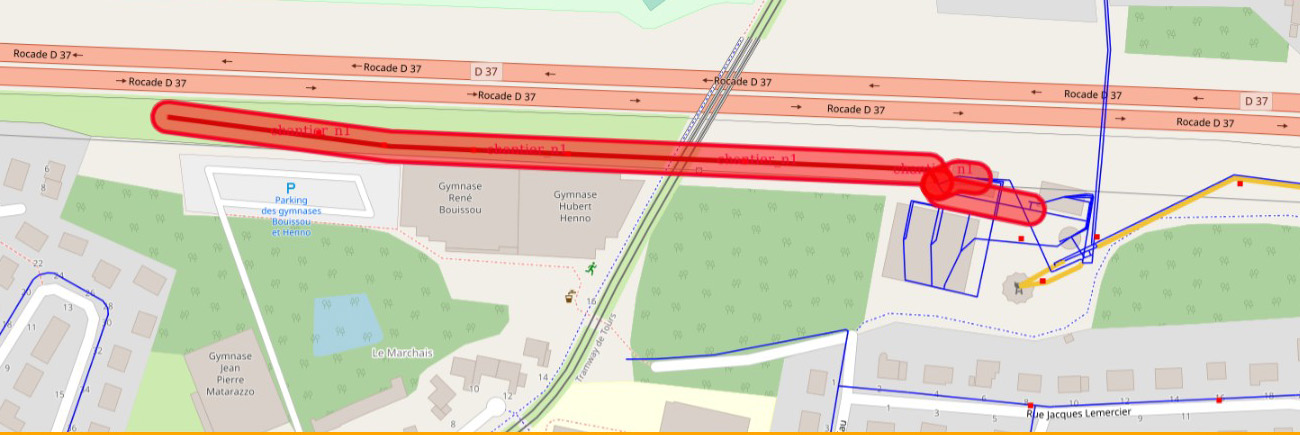
⬇ Deliverables
Site map, GIS layer with worksite details, proposed replacement programme.
Automatically defining optimised pipe replacement projects
The tools in our HpO® digital solution enable us to automate and optimise the definition of projects. The process is based on :
At the scale of the worksite, the algorithms implemented generate groups of pipes enabling the maximum number of failures to be avoided in the future.
⬇ Deliverables
Map of optimised sites, GIS layer with site details,
proposed renewal programme.
Producing worksite summary sheets
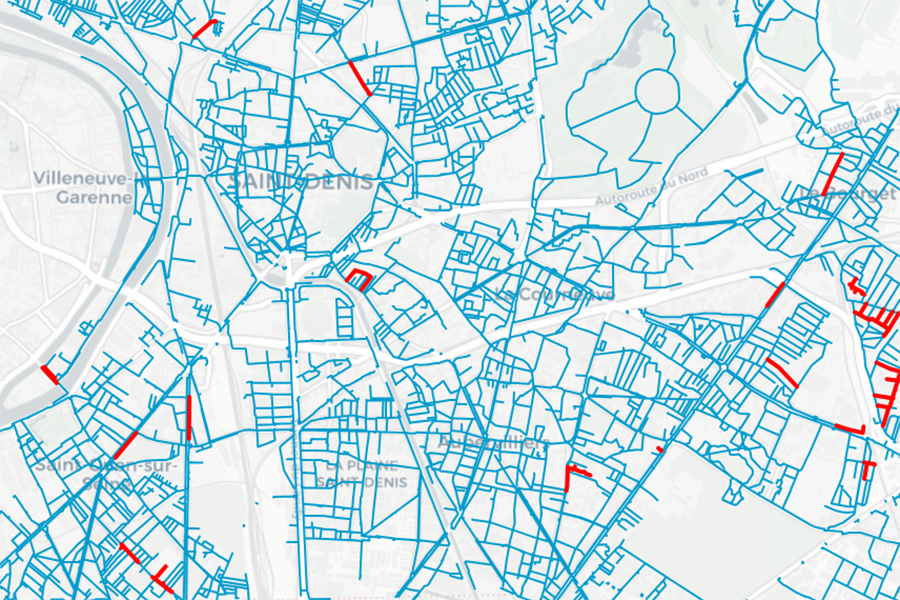
The tools in our HpO® digital solution enable us to export detailed worksite sheets with key information, map coverage, details of sections, quantities and estimated costs.

⬇ Deliverables
Detailed worksite sheets in PDF format.
Visual results that can be communicated and integrated into the water utility’s GIS
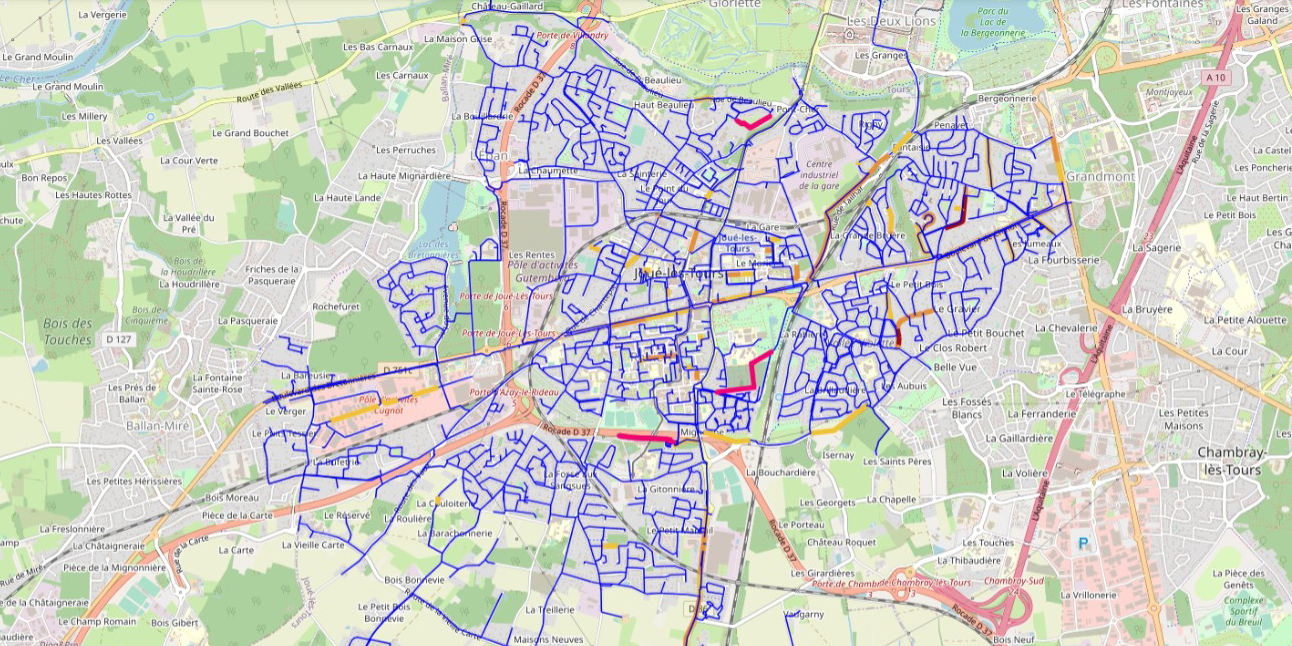
HpO® tools as a digital solution for water utilities?

Our HpO® tools are also available in software form to digitise the asset management process for drinking water networks.

Assistance technique pour la gestion patrimoniale des réseaux d’eau potable avec mise en œuvre de SIROCO® puis HpO®
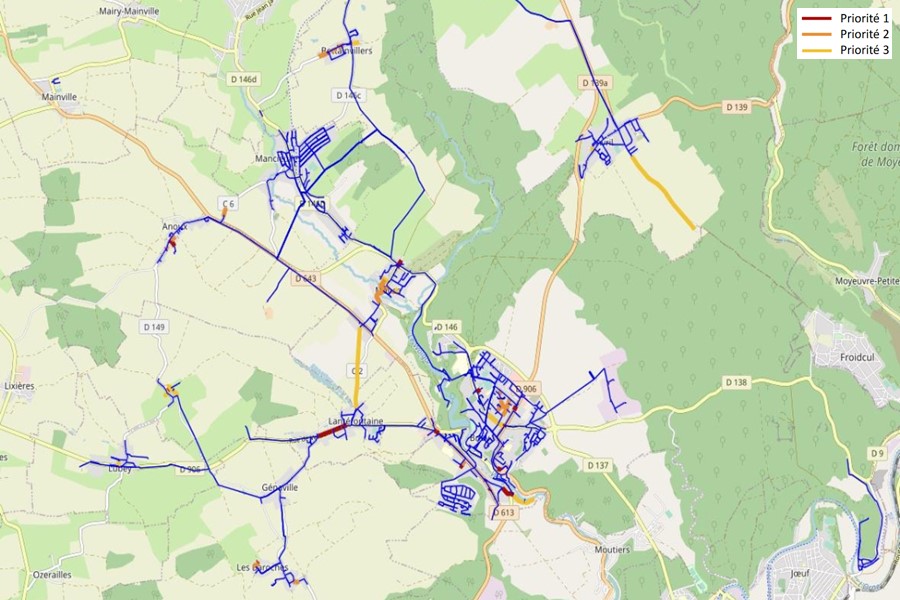
Gestion patrimoniale des réseaux d’eau potable avec le système HpO®
Programmation optimisée du renouvellement des canalisations
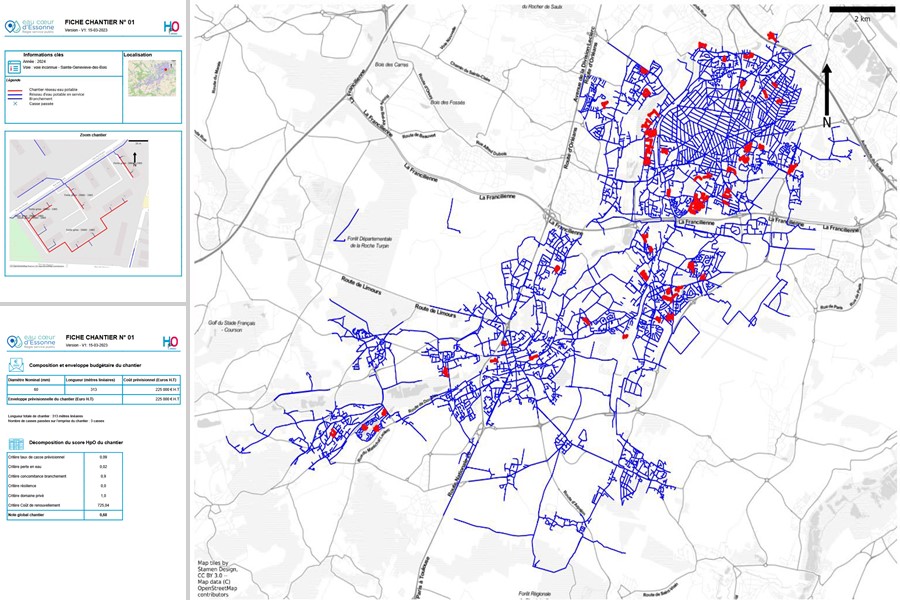
Étude stratégique à l’aide du système innovant HpO® pour la haute performance des réseaux d’eau potable
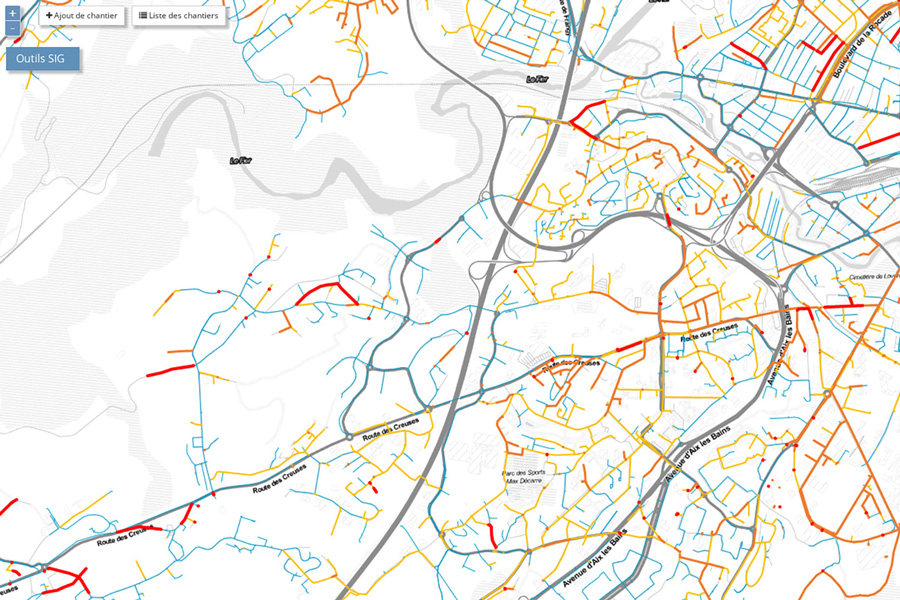
Étude stratégique HpO® et accompagnement expert pour le renouvellement cible et performant des réseaux d’eau
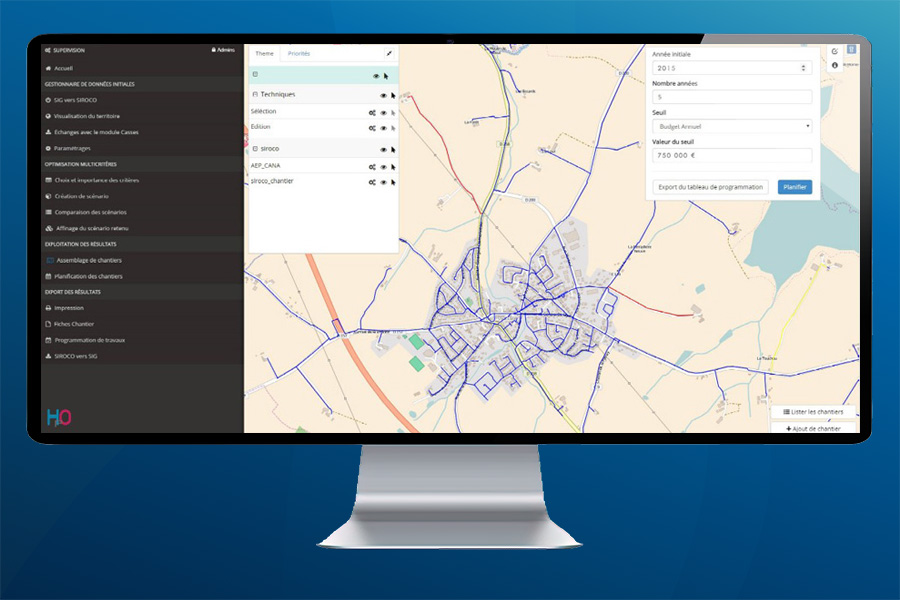
Acquisition et configuration d’un outil de gestion patrimoniale des réseaux d’eau potable
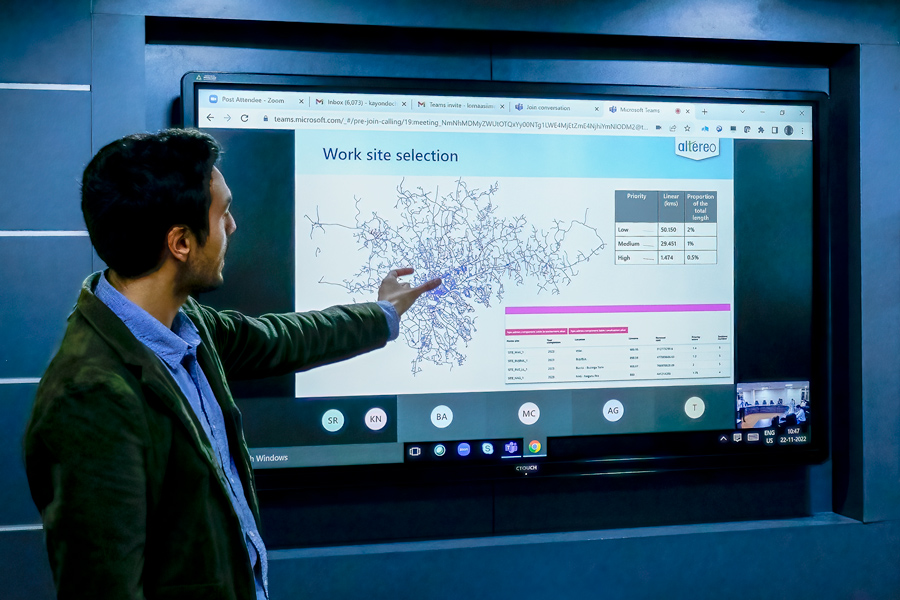
Déploiement du système d’Intelligence Artificielle HpO® pour l’amélioration des performances du réseau d’eau potable de Kampala